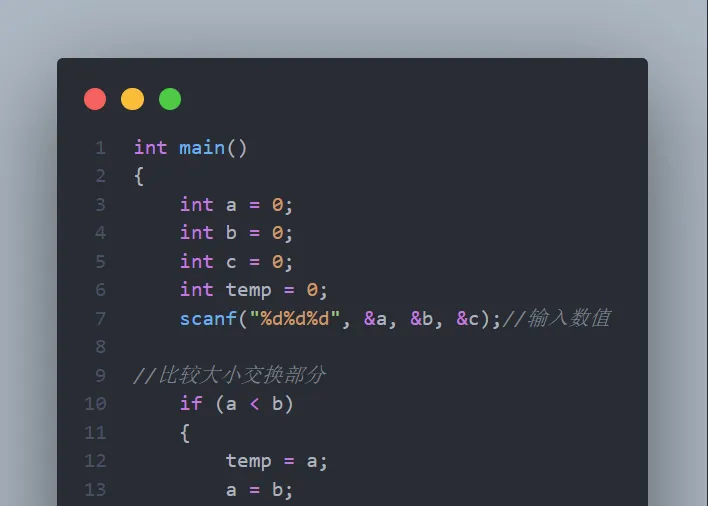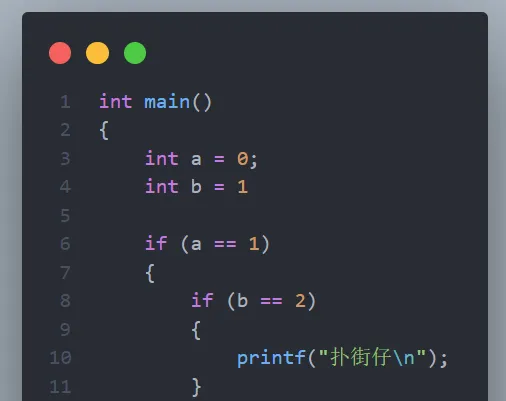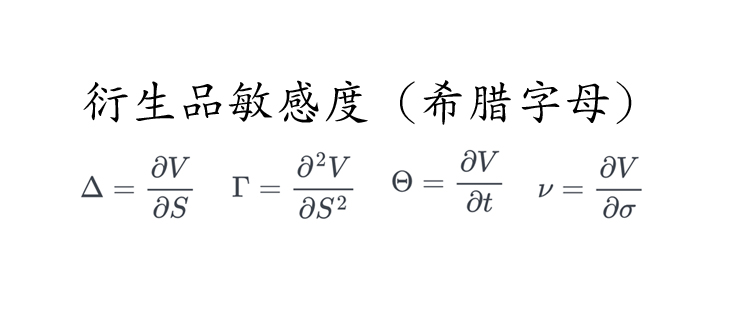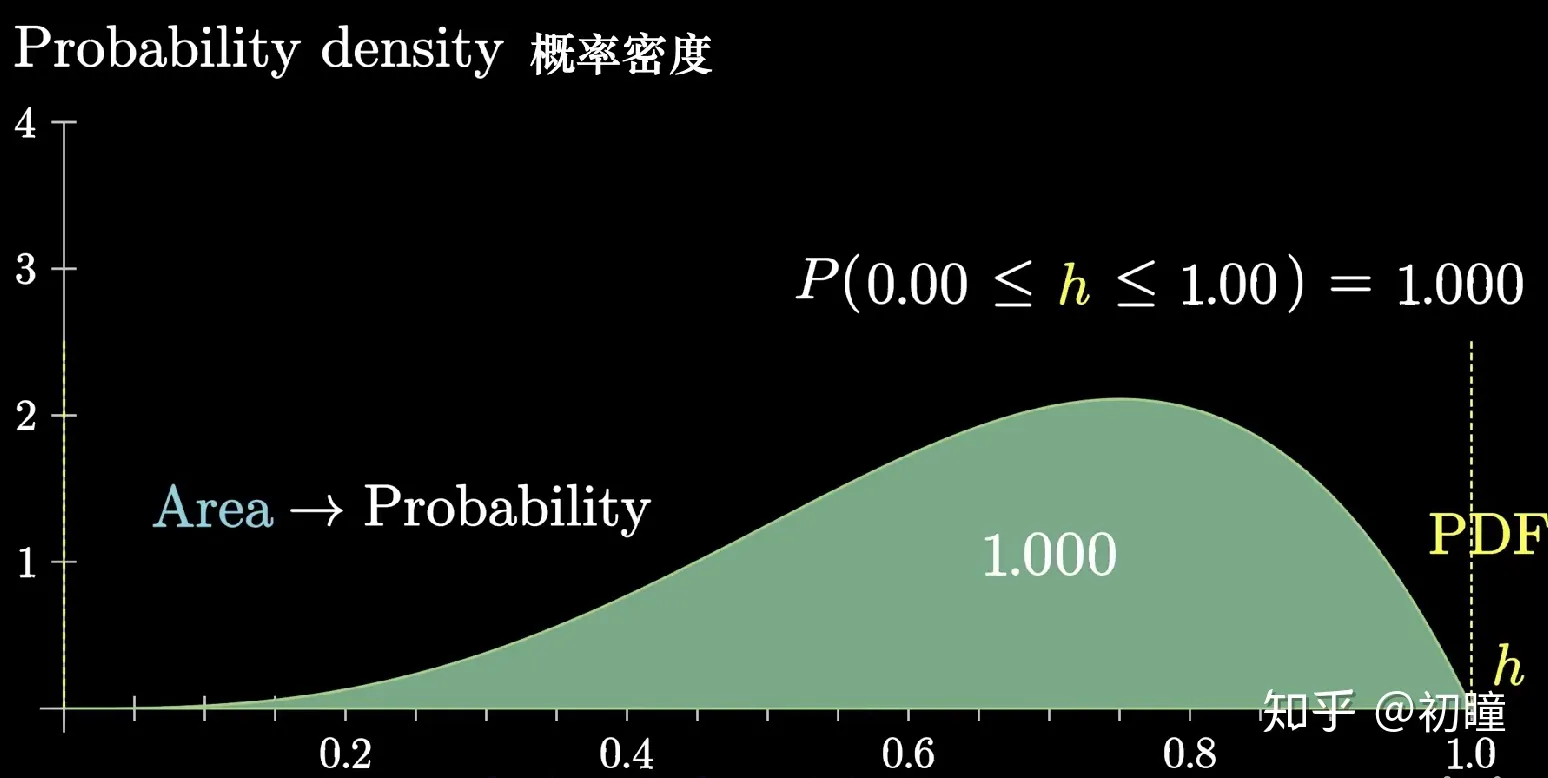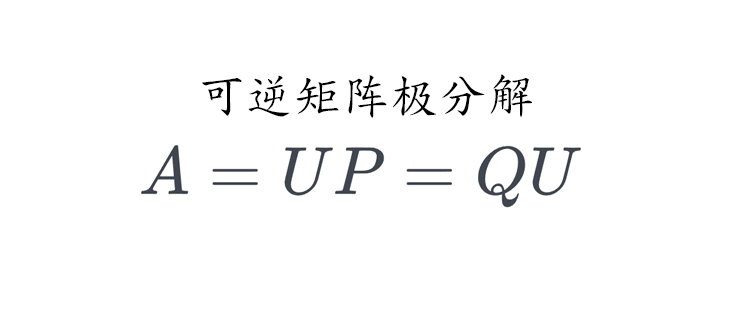本文档2023-12-17上线在博客处。
顺序结构程序设计
运算符和表达式
交换2个整型变量的值
交换指针指向的内容
C++交换函数swap(n1, n2)
1 2 3 4 5 6 7 8 9 10 11 12 13 14 15 16 17 18 19 20 21 22 23 #include <iostream> using namespace std ; template <class T > void swap1 (T *p1, T *p2) { T temp = *p1; *p1 = *p2; *p2 = temp; } int main () { int num1, num2, z; cin >> num1 >> num2; swap1(&num1, &num2); cout << num1 << ' ' << num2; return 0 ; }
买图书
考点是小数的输出,方法有:
c语言printf格式化:"%.nf",n是输出的小数位数,默认6位
c++引用<iomanip>,cout << fixed << setprecision(2);控制输出位数,此后输出的都是2位小数
1 2 3 4 5 6 7 8 9 10 11 12 #include <iostream> #include <stdio.h> using namespace std;int main () float n, m; cin >> n >> m; printf ("%.2f" , n - m * 0.8 ); return 0 ; }
计算分数浮点数值
使用了 1.0 * a / b ,使得被除数是一个double类型,才能得到正确的解。否则,小数部分会丢失,整数除以整数结果还是整数。
1 2 3 4 5 6 7 8 9 10 11 12 13 14 15 16 #include <iomanip> #include <iostream> using namespace std;int main () int a, b; double c; cin >> a >> b; c = 1.0 * a / b; cout << fixed << setprecision (9 ); cout << c; return 0 ; }
常量和变量
计算百分数
题目要求:保留三位小数,用百分数输出。
关键在于小数位数的保留和百分数的输出:
小数位数:C语言 printf 格式控制 "$.nf",c++使用 cout << fixed << setprecision(n);进行小数位数的控制
百分数的输出:C语言 printf 中,在%前面再加一个%
输出 printf 的输出% 开头,可以和其他字符组合使用。基本的语法是:printf("格式控制", 内容);格式控制 可以把内容进行格式化,例如 %d 十进制整数、%o 八进制整数、%c 一个字符、%s 字符串、%f 小数形式输出实数(包括单精度、双精度)、%e 指数形式输出实数、%g 字段选择小数形式或指数形式输出,且不输出无意义的0.m 可确定输出范围,n 确定小数位数
%ms:输出的字符串占m列,如字符串本身长度大于m,则突破获m的限制,将字符串全部输出。若串长小于m,则左补空格。%-ms:如果串长小于m,则在m列范围内,字符串向左靠,右补空格。%m.ns:输出占m列,但只取字符串中左端n个字符。这n个字符输出在m列的右侧,左补空格。
输入
C语言可使用
scanf(),读取不包括空格和终止符(默认换行符)fgets()
C++中可使用
cin >>类似于scanf(),是std中的。cin.get()读取单个或指定长度字符,读取包括空格,不包括终止符(默认换行符)。cin.getline()读取指定长度的字符,读取包括空格,不包括终止符,且读取完成后会把输入流设定为Fail状态。可用于char str[100]这样的char类型的字符串整行输入cin.getline(str, sizeof(str))。getline 读取所有空白字符(整个缓存区),不包括换行符,读取完后无残留。是字符串流的函数,只能读取string对象,使用时需要包含头文件<stirng>。可用于string s这样的的string类型的字符串的整行输入getline(cin, s);。
字符串
一个带空格的句子的存储办法可以是str[100]这样的指定长度的字符串(C语言风格)
另一种办法是用封装好的字符串类string(C++风格),动态分配长度
类型
char
string
定义
char str[size]string s
求长度
函数strlen(str),操作运算符sizeof(str)
成员函数length()、成员函数size(),也可以转换为char*类型,使用char的strlen(通过s.c_str())
复制
strcpy(str1, str2)
s1 = s2
整行输入
cin.getline(str, needsize)getline(cin, s)
备注
空字符也要算入needsize
读取及修改单个字符
str[i]
s[i]
1 2 3 4 5 6 7 8 9 10 11 12 13 #include <iostream> #include <iomanip> #include <stdio.h> using namespace std;int main () int m, n; cin >> m >> n; printf ("%.3f%%" , n*1.0 /m*100 ); return 0 ; }
求多项式的值
1 2 3 4 5 6 7 8 9 10 11 12 13 14 15 16 17 18 19 20 21 22 23 24 25 #include <iostream> #include <iomanip> #include <string> using namespace std;double cal (int m, double n) double temp = n; for (int i = 0 ; i < m - 1 ; i++) n *= temp; return n; } int main () double a, b, c, d, x, res; cin >> x >> a >> b >> c >> d; a = a * 1.0 * cal (3 , x); b = b * 1.0 * cal (2 , x); c = c * 1.0 * cal (1 , x); cout << fixed << setprecision (7 ); cout << a + b + c + d << endl; return 0 ; }
标准数据类型
浮点数取整
(强制类型转换)
1 2 3 4 5 6 7 8 9 10 11 12 13 14 15 #include <iostream> #include <iomanip> #include <string> using namespace std;int main () float a; cin >> a; int b = int (a); cout << b << endl; return 0 ; }
输出字符的ASCII值
核心思路还是类型转换,把char变成int
1 2 3 4 5 6 7 8 9 10 11 12 13 #include <iostream> #include <iomanip> #include <string> using namespace std;int main () char x; scanf ("%s" , &x); printf ("%d\n" , int (x)); return 0 ; }
输出字符串的长度
不要想太复杂
1 2 3 4 5 6 7 8 9 10 11 #include <iostream> #include <iomanip> #include <string> using namespace std;int main () printf ("%d\n" , sizeof ("Hello, World!" )); return 0 ; }
对字符串赋值
C语言
C语言中,可以通过字符数组 进行初始化。注意,不可以对数组名直接赋值。
1 2 3 4 5 6 int main () char str[10 ] = "China" ; printf ("str = %s" , &str); return 0 ; }
使用strcpy函数进行初始化。需要注意的是,使用strcpy函数,strcpy(str1,str2),字符数组1必须定义的足够大,以便容纳被复制的字符串2,避免数组越界。在C语言中,将一个字符串赋值给另一个字符串,只能使用strcpy函数 ,但是,可以使用赋值号实现对单个字符的赋值 ,此时需要注意的是,结束后一定要自行添加 ‘\0’。
1 2 3 4 5 6 7 int main () char str1[10 ],str2[] = "China" ; strcpy (str1, str2); printf ("str1 = %s" , str1); return 0 ; }
通过指针赋值
1 2 3 4 5 6 7 8 #define _CRT_SECURE_NO_WARNINGS #include <stdio.h> int main () char * string = "I Love China" ; printf ("string = %s" , string); return 0 ; }
数据的输入输出
小孩分糖果
某幼儿园里,有5个小朋友编号为1、2、3、4、5,他们按自己的编号顺序围坐在一张圆桌旁。他们身上都有若干个糖果(键盘输入),现在他们做一个分糖果游戏。从1号小朋友开始,将自己的糖果均分三份(如果有多余的糖果,则立即吃掉),自己留一份,其余两份分给他的相邻的两个小朋友。接着2号、3号、4号、5号小朋友同样这么做。问一轮后,每个小朋友手上分别有多少糖果。
1 2 3 4 5 6 7 8 9 10 11 12 13 14 15 16 17 18 19 20 21 22 23 24 25 26 27 28 29 int main () int a, b, c, d, e; int f, g, h, i, j; scanf ("%d%d%d%d%d" , &a, &b, &c, &d, &e); f = a / 3 ; b = b + f; e = e + f; g = b / 3 ; c = c + g; a = f + g; h = c / 3 ; d = d + h; b = h + g; i = d / 3 ; e = e + i; c = h + i; j = e / 3 ; a = a + j; d = i + j; e = j; printf ("%5d%5d%5d%5d%5d" , a, b, c, d, e); return 0 ; }
顺序结构实例
数位调换(水仙花数的思路)
实现百位数和个位数字的调换,思路和水仙花很类似,难点在于如何得到各个数位上的数字。
对于一个n位数,求任意第m位数其实都一样,就是两个思路:
用/得到任意位数的首位数,用%得到末位数字
对于中间位数也就是第m位数,可以把这个n位数用除法变成n-m位数,也就相当于把这个中间位数用除法变到末位,用%得到末位数字
百位数:a\100a\10%10
1 2 3 4 5 6 7 8 9 10 11 12 13 14 15 16 #include <iostream> #include <iomanip> #include <string> using namespace std;int main () int x, a, b, c; cin >> x; a = x / 100 ; b = x % 100 / 10 ; c = x % 10 ; cout << c*100 + b*10 + a << endl; return 0 ; }
偷懒用cout << c << b<< a;,有少数情况无法通过。不知为何。
三个数比较大小从大到小输出
涉及到排序算法。这里是选择排序,也就是每次选出一个最大的元素
1 2 3 4 5 6 7 8 9 10 11 12 13 14 15 16 17 18 19 20 21 22 23 24 25 26 27 28 29 30 31 32 33 #include <iostream> #include <iomanip> #include <string> #include <algorithm> #include <cmath> using namespace std;int main () int a, b, c, temp; cin >> a >> b >> c; if (b >= a) { temp = a; a = b; b = temp; } if (c >= a) { temp = a; a = c; c = temp; } if (c >= b) { temp = b; b = c; c = temp; } cout << a << " " << b << " " << c; return 0 ; }
排序算法总结
选择排序
从待排序序列中找到最小元素
若这个元素不是第一个元素,将这个元素换到第一位
找到次小的元素,若不是第二位,与之交换
不断重复
…
插入排序
从第一个元素开始,该元素可以认为已经被排序.
取出下一个元素,在已经排序的元素序列中从后向前扫描
如果该元素(已排序)大于新元素,将该元素移到下一位置;
重复步骤3,直到找到已排序的元素小于或等于新元素的位置
将新元素插入到该位置后
重复2~5
快排
程序的控制结构
switch语句
星期几
1 2 3 4 5 6 7 8 9 10 11 12 13 14 15 16 17 18 19 20 21 22 23 24 25 26 27 28 29 30 31 32 33 34 35 36 37 38 39 40 41 #include <iostream> #include <iomanip> #include <string> #include <algorithm> #include <cmath> using namespace std;int main () int x; cin >> x; switch (x) { case 1 : cout << "Monday" << endl; break ; case 2 : cout << "Tuesday" << endl; break ; case 3 : cout << "Wednesday" << endl; break ; case 4 : cout << "Thursday" << endl; break ; case 5 : cout << "Friday" << endl; break ; case 6 : cout << "Saturday" << endl; break ; case 7 : cout << "Sunday" << endl; break ; default : cout << "input error!" << endl; break ; } return 0 ; }
循环结构的程序设计
for语句
等差数列求和
注意:sum 要初始化,也就是 sum = 0;
1 2 3 4 5 6 7 8 9 10 11 12 13 14 15 16 17 18 19 20 21 #include <iostream> #include <iomanip> #include <string> #include <algorithm> #include <cmath> #include <cstring> using namespace std;int main () int x, sum1; sum1 = 0 ; cin >> x; for (int i = 1 ; i <= x; i++) { sum1 += i; } cout << sum1; return 0 ; }
分别求奇数和偶数和
1 2 3 4 5 6 7 8 9 10 11 12 13 14 15 16 17 18 19 20 21 22 23 24 25 26 27 28 29 #include <iostream> #include <iomanip> #include <string> #include <algorithm> #include <cmath> #include <cstring> using namespace std;int main () int x = 0 ; int sum1 = 0 ; int sum2 = 0 ; cin >> x; for (int i = 1 ; i <= x; i++) { if (i % 2 == 0 ) { sum2 += i; } else { sum1 += i; } } cout << sum2 << " " << sum1; return 0 ; }
求平均年龄
1 2 3 4 5 6 7 8 9 10 11 12 13 14 15 16 17 18 19 20 21 22 23 24 #include <iostream> #include <iomanip> #include <string> #include <algorithm> #include <cmath> #include <cstring> using namespace std;int main () int sum = 0 ; int n = 0 ; int a[100 ] = {0 }; cin >> n; for (int i = 0 ; i < n; i++) { cin >> a[i]; sum += a[i]; } cout << fixed << setprecision (2 ); cout << sum * 1.0 / n; return 0 ; }
与指定字符相同的数的个数
边输入边判断,符合就++
1 2 3 4 5 6 7 8 9 10 11 12 13 14 15 16 17 18 19 20 21 22 23 24 25 26 #include <iostream> #include <iomanip> #include <string> #include <algorithm> #include <cmath> #include <cstring> using namespace std;int main () int n, m, sum; sum = 0 ; cin >> n >> m; for (int i = 0 ; i < n; i++) { int x; cin >> x; if (x == m) { sum++; } } cout << sum; return 0 ; }
乘方
1 2 3 4 5 6 7 8 9 10 11 12 13 14 15 16 17 18 19 20 21 #include <iostream> #include <iomanip> #include <string> #include <algorithm> #include <cmath> #include <cstring> using namespace std;int main () int a, n, res; cin >> a >> n; res = a; for (int i = 1 ; i < n; i++) { res *= a; } cout << res; return 0 ; }
斐波那契
1 2 3 4 5 6 7 8 9 10 11 12 13 14 15 16 17 18 19 20 21 22 23 #include <iostream> #include <iomanip> #include <string> #include <algorithm> #include <cmath> #include <cstring> using namespace std;int main () int num[100 ] = {0 }; num[0 ] = 1 ; num[1 ] = 1 ; int n; cin >> n; for (int i = 2 ; i <= n; i++) { num[i] = num[i - 1 ] + num[i - 2 ]; } cout << num[n - 1 ]; return 0 ; }
鸡尾酒疗法
注意是有效率,不是无效率
1 2 3 4 5 6 7 8 9 10 11 12 13 14 15 16 17 18 19 20 21 22 23 24 25 26 27 28 29 30 31 32 33 34 35 36 37 38 #include <iostream> #include <iomanip> #include <string> #include <algorithm> #include <cmath> #include <cstring> using namespace std;int main () double d[30 ]; int n; cin >> n; for (int i = 0 ; i < n; i++) { double x, y; cin >> x >> y; d[i] = 1.0 * y / x; } double ji = d[0 ]; for (int i = 1 ; i < n; i++) { if ((d[i] - ji) > 0.05 ) { cout << "better" << endl; } else if ((d[i] - ji) < -0.05 ) { cout << "worse" << endl; } else { cout << "same" << endl; } } return 0 ; }
救援
取整问题
向上取整ceil
向下取整floor
四舍五入round
朝0方向取整fix,正数向下取,负数向上取
1 2 3 4 5 6 7 8 9 10 11 12 13 14 15 16 17 18 19 20 21 22 23 24 25 26 27 28 #include <iostream> #include <iomanip> #include <string> #include <algorithm> #include <cmath> #include <cstring> using namespace std;int main () int n; cin >> n; double dis[100 ][2 ]; int people = 0 ; double sumtime = 0 ; for (int i = 0 ; i < n; i++) { int x; cin >> dis[i][0 ] >> dis[i][1 ]; cin >> x; dis[i][2 ] = 2 * sqrt (dis[i][0 ] * dis[i][0 ] + dis[i][1 ] * dis[i][1 ]) / 50 ; sumtime += x * 1.0 * 1.5 ; sumtime += dis[i][2 ]; } cout << ceil (sumtime) << endl; return 0 ; }
零花钱
关键是思路
求整百的数,使用模%运算
1 2 3 4 5 6 7 8 9 10 11 12 13 14 15 16 17 18 19 20 21 22 23 24 25 26 27 28 29 30 #include <iostream> using namespace std;int main () int savings = 0 ; int balance = 0 ; int budget; for (int month = 1 ; month <= 12 ; ++month) { balance += 300 ; cin >> budget; balance -= budget; if (balance < 0 ) { cout << "-" << month << endl; return 0 ; } int save = balance - (balance % 100 ); savings += save; balance -= save; } int final_amount = balance + (savings + (savings / 5 )); cout << final_amount << endl; return 0 ; }
药房管理
注意,中间有一个人需求超过剩余,不代表后面的人就不能再取
1 2 3 4 5 6 7 8 9 10 11 12 13 14 15 16 17 18 19 20 21 22 23 24 25 26 27 28 29 30 #include <iostream> #include <iomanip> #include <string> #include <algorithm> #include <cmath> #include <cstring> using namespace std;int main () int m, n, r = 0 ; int f = 0 ; cin >> m >> n; r = m; for (int i = 1 ; i <= n; i++) { int temp; cin >> temp; if (r >= temp) { r -= temp; } else { f++; } } cout << f; return 0 ; }
正常血压
1 2 3 4 5 6 7 8 9 10 11 12 13 14 15 16 17 18 19 20 21 22 23 24 25 26 27 28 29 30 31 32 33 34 35 36 37 38 39 40 41 42 43 44 45 46 47 48 49 #include <iostream> using namespace std;int main () int n = 0 ; cin >> n; int nor[105 ] = {0 }; int c = 0 ; int max = 0 ; int x, y; cin >> x >> y; if ((90 <= x && x <= 140 ) && (60 <= y && y <= 90 )) { nor[0 ] = 1 ; } for (int i = 1 ; i < n; i++) { int a, b; cin >> a >> b; if ((90 <= a && a <= 140 ) && (60 <= b && b <= 90 )) { nor[i] = 1 ; if (nor[i-1 ] == 1 ) { c++; if (c>max) { max = c; } } else { c = 1 ; if (c>max) { max = c; } } } else { c = 0 ; } } cout << max; return 0 ; }
满足条件的四位数
核心在于各个数位上数字的获取
最简便的方法:%10可取最后一位,因此/10递进向左求即可
1 2 3 4 5 6 7 8 9 10 11 12 13 14 15 16 17 18 19 20 21 22 23 24 25 #include <iostream> using namespace std;int main () int n = 0 ; cin >> n; int num = 0 ; for (int i = 0 ; i < n; i++) { int a, b, c, d, x; cin >> x; a = x%10 ; b = x/10 %10 ; c = x/10 /10 %10 ; d = x/10 /10 /10 %10 ; if (a - d - c - b > 0 ) { num++; } } cout << num; return 0 ; }
求分数序列和
1 2 3 4 5 6 7 8 9 10 11 12 13 14 15 16 17 18 19 20 21 22 #include <iostream> using namespace std;int main () int n = 0 ; cin >> n; int num[100 ][2 ] = {0 }; num[0 ][1 ] = 1 ; num[0 ][2 ] = 2 ; double sum = num[0 ][2 ] / num[0 ][1 ]; for (int i = 1 ; i< n; i++) { double temp; num[i][1 ] = num[i-1 ][2 ]; num[i][2 ] = num[i-1 ][1 ] + num[i-1 ][2 ]; sum += num[i][2 ] * 1.0 / num[i][1 ]; } printf ("%.4f" , sum); return 0 ; }
求小数的某一位
1 2 3 4 5 6 7 8 9 10 11 12 13 14 15 16 17 18 #include <iostream> using namespace std;int main () int a, b, n, d; cin >> a >> b >> n; int r = a % b; for (int i = 1 ; i <= n; i++) { r *= 10 ; d = r / b; r %= b; } cout << d; return 0 ; }
求幂的末尾
和求上一题求小数一样,减小运算量,只计算后三位,大于1000即只取后三位。
1 2 3 4 5 6 7 8 9 10 11 12 13 14 15 16 17 18 19 20 21 22 23 24 25 26 27 28 29 30 31 32 33 34 #include <bits/stdc++.h> using namespace std;int main () int a, b, s = 1 ; int x, y, z; cin >> a >> b; for (int i = 0 ; i < b; i++) { s *= a; if (s > 1000 ); { x = s % 10 ; y = s / 10 % 10 ; z = s / 100 % 10 ; s = z * 100 +y * 10 + x; } } if (x == 0 && (y !=0 || z!=0 )) { printf ("0%d%d" , z, y); } else if (x == 0 && y == 0 && z != 0 ) { printf ("00%d" , z); } else { printf ("%d%d%d" , z, y, x); } return 0 ; }
While循环
最大公约数
c++直接用现成的库函数__gcd(a, b),属于库algorithm
同理可求出最小公倍数=a * b / __gcd(a, b)
最小n值
1 2 3 4 5 6 7 8 9 10 11 12 13 14 15 16 17 18 19 20 21 #include <bits/stdc++.h> using namespace std;int main () int m = 0 ; int n = 0 ; double sum = 1 ; cin >> m; int i = 1 ; while (sum < m) { double temp; i++; temp = 1.0 / i; sum += temp; } cout << i; return 0 ; }
球弹跳的高度
注意,整形 /=2 和 *=0.5 得到的结果是不一样的
1 2 3 4 5 6 7 8 9 10 11 12 13 14 15 16 17 18 19 20 21 22 23 24 #include <bits/stdc++.h> using namespace std;int main () int h; cin >> h; double sum = 0 ; double res = h * 1.0 ; int i = 1 ; while (i<=10 ) { sum += res; res /= 2.0 ; sum += res; i++; } sum -= res; cout << sum << endl; cout << res; return 0 ; }
数组
蛇形输出
思路就是:判断是否再边界内且未曾填过数,从而确定是否填入数字,用while循环依次从右上到右下再到左下再到左上再到右上,进行循环。一共填入n*n 个数字,所以最大值也是 n*n
1 2 3 4 5 6 7 8 9 10 11 12 13 14 15 16 17 18 19 20 21 22 23 24 25 26 27 28 29 30 31 32 33 34 35 36 37 38 39 40 41 42 43 44 45 46 47 48 49 50 51 52 #include <iostream> #include <iomanip> #include <string> #include <algorithm> #include <cmath> #include <cstring> using namespace std;int a[30 ][30 ] = {0 };int main () int x, y, d, n; cin >> n; d = 1 ; x = 0 ; y = n - 1 ; memset (a, 0 , sizeof (a)); a[x][y] = 1 ; while (d < n * n) { while (x < n - 1 && !a[x + 1 ][y]) { a[++x][y] = ++d; } while (y > 0 && !a[x][y - 1 ]) { a[x][--y] = ++d; } while (x > 0 && !a[x - 1 ][y]) { a[--x][y] = ++d; } while (y < n - 1 && !a[x][y + 1 ]) { a[x][++y] = ++d; } } for (int i = 0 ; i < n; i++) { for (int j = 0 ; j < n; j++) { cout << a[i][j] << " " ; } cout << endl; } return 0 ; }
递归
Hermite函数
用递归函数实现Hermite多项式求值。当x>1时,Hermite多项式定义为:
H n ( x ) = { 1 , n = 0 2 x , n = 1 2 x H n − 1 ( x ) − 2 ( n − 1 ) H n − 2 ( x ) , n > 1 ; H_n(x)=\begin{cases}
1, & n=0\\
2x, & n=1\\
2xH_{n-1}(x)-2(n-1)H_{n-2}(x), & n>1;
\end{cases}
H n ( x ) = ⎩ ⎨ ⎧ 1 , 2 x , 2 x H n − 1 ( x ) − 2 ( n − 1 ) H n − 2 ( x ) , n = 0 n = 1 n > 1 ;
当输入整数n和实数x后,求出Hermite多项式第n项的值。
1 2 3 4 5 6 7 8 9 10 11 12 13 14 15 16 17 18 19 20 21 22 23 24 25 26 27 28 29 30 31 32 33 #include <iostream> #include <algorithm> using namespace std;float Hermite (float a, int n) float k; if (n == 0 ) { k = 1 ; } else if (n == 1 ) { k = 2 * a; } else if (n > 1 ) { k = 2 * a * Hermite (a, n - 1 ) - 2 * (n - 1 ) * Hermite (a, n - 2 ); } return k; } int main () float a = 0 ; int n = 0 ; cin >> n >> a; cout << "y=" << Hermite (a, n); return 0 ; }
分别设计两个递归函数,一个实现整数的正序输出,另一个则实现反序输出。如输入一个整数3456,则输出3456和6543。
算法提示:重复除以10求余,直到商为0为止。如3456%10的余数为6,商为345;345%10的余数为5,商为34;34%10的余数为4,商为3;3%10的余数为3,商为0,至此结束。先输出余数,后递归,则为反序输出;先递归,后输出余数,则为正序输出。
1 2 3 4 5 6 7 8 9 10 11 12 13 14 15 16 17 18 19 20 21 22 23 24 25 26 27 28 29 30 31 32 33 34 35 36 37 38 39 #include <iostream> #include <algorithm> using namespace std;void posi (int n) if (n >= 10 ) { posi (n / 10 ); } cout << n % 10 ; } void nega (int n) if (n <= 9 ) { cout << n; } else { cout << n % 10 ; nega (n / 10 ); } } int main () int a; cin >> a; cout << "正序:" ; posi (a); cout << endl; cout << "反序:" ; nega (a); cout << endl; return 0 ; }






